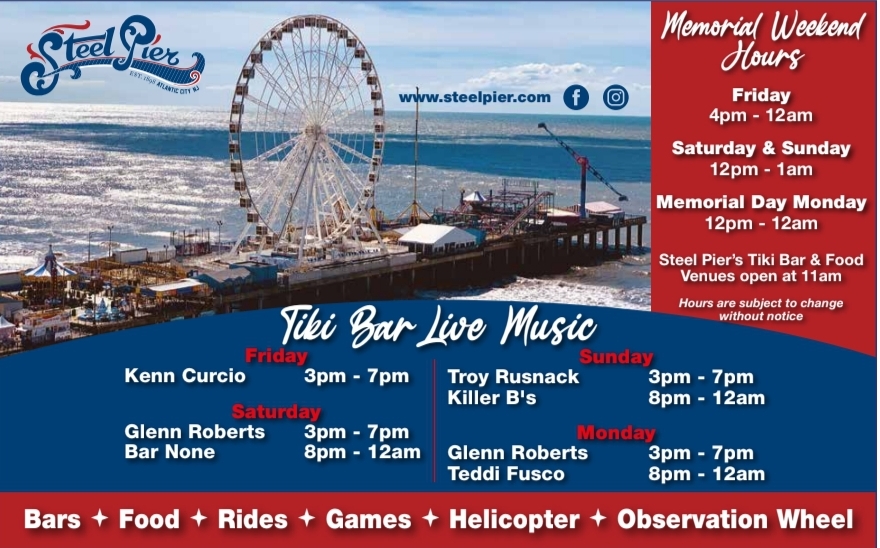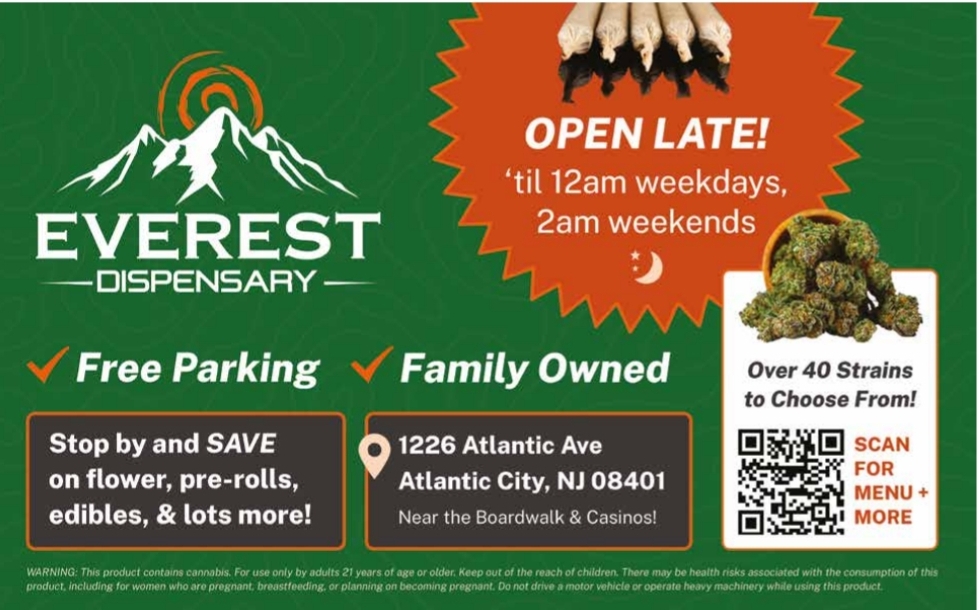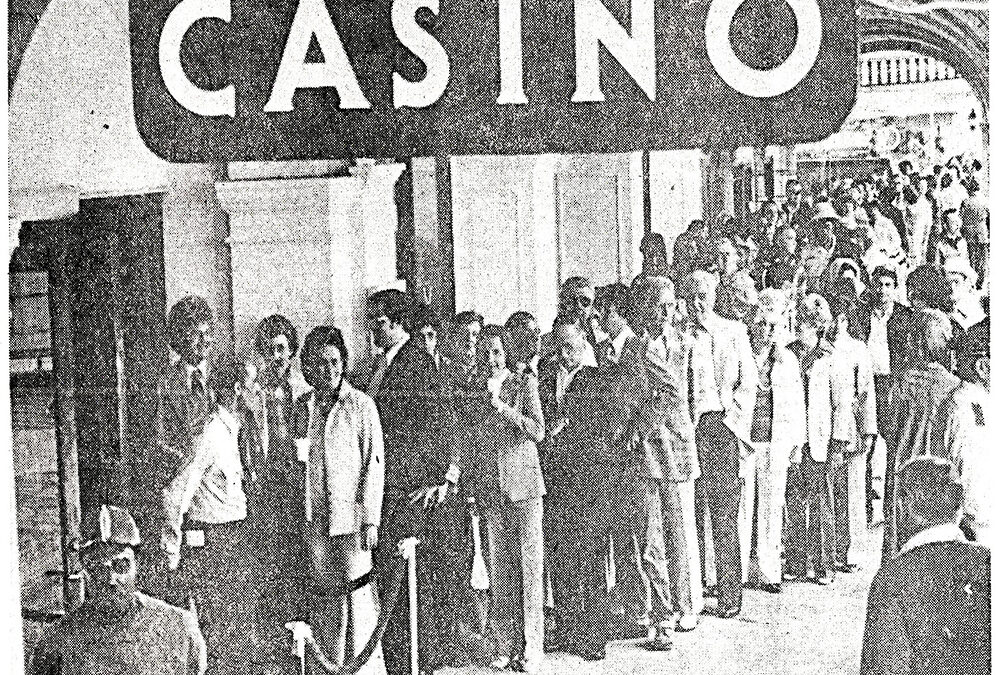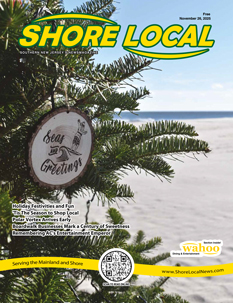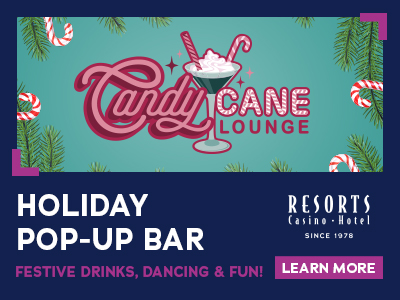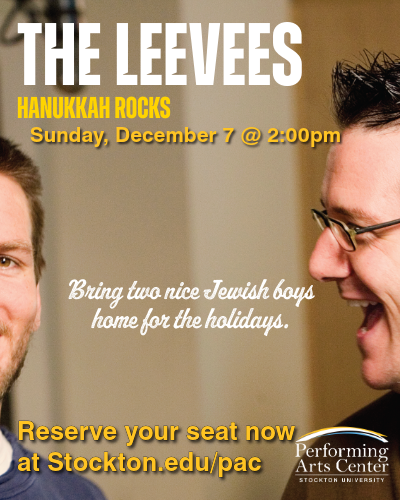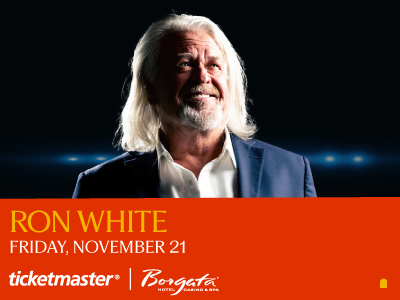Remembering When
In four days, Resorts Casino-Hotel will mark its 47th anniversary as the first legal casino to open outside of Nevada.
The stories of that epochal day—about entertainer Steve Lawrence rolling the dice after making the first-ever state-sanctioned bet (fun fact: his “point” was five and he made it); about the surreally long line of gamblers on the Boardwalk caused by players who refused to relinquish their places at the tables and slot machines, and about the Hefty bags staffers were forced to use to store the unexpectedly copious amounts of cash that came off the casino floor–are indelibly stored in Our Town’s institutional memory.
But what is forgotten by–or unknown to– some is that the casinos of 1978 and 1979 were significantly different from those we know and patronize today. Below is a look at some of those differences:
Jackets required
When the pro-casino forces were martialing their arguments for legalization, chief among them was that the glitz and shlock of Las Vegas would be avoided. Instead, the model would be the gaming halls of the South of France, where affluence, understated elegance and sophistication ruled. Part of this intention to make Atlantic City the “American Monte Carlo” was the edict that men would be required to wear a suit jacket; when what was initially called Resorts International opened its doors, that rule was enforced.
However, it didn’t take all that long for the nascent gaming industry to realize the mid-Atlantic region wasn’t the South of France: Americans were in the process of de-formalizing society and casino patrons didn’t want to have to play dress-up in order to see a show or throw $20 into a slot machine. By the dawn of the 1980s, any notion of Atlantic City establishing itself as a bastion of elegance and sophistication was but a quickly dissipating memory.
Gaming options
Today, Atlantic City visitors have a multitude of games from which to choose. For instance, Borgata Hotel Casino & Spa offers five table games that are based on Texas Hold ‘Em poker. But in the early years, local gamblers were legally limited to just six options: Craps, blackjack, roulette, baccarat, slot machines and the Big Six wheel, which was the casino version of the kinds of games generations of visitors have played at Boardwalk stalls and amusement piers.
One significant “Thou Shalt Not” of the Casino Control Act of 1977 was the prohibition of the touching cards by blackjack and baccarat players. The liberalization of the gaming menu began in earnest in 1991, when Pai Gow Poker was introduced. It led to permitting players to handle the cards (Pai Gow players must do that in order to make the two separate hands out of the seven cards that are dealt to them as required by the game’s rules). This, in turn, led to the 1993 introduction of poker.
The early days also saw gaming tables at which the minimum bet was $2. And of course, in that pre-digital age, all slot machines were coin-operated.
Hours of operation
Today, the nine local casino floors are open 24 hours a day, 365 days a year. But that wasn’t the case back in the day.
For the first 14 years of legal casino gaming, state law mandated that gambling could take place between 10 a.m. and 4 a.m. weekdays and 10 a.m. and 6 a.m. weekends and holidays. But in the summer of 1992, round-the-clock gambling was approved—a move that stands as one of the most significant in the industry’s history.
Headliner entertainment
Today’s casino bookings comprise a roster that reflects the nature of the town’s diverse demographic targets. But the first generation of headliners was far-less heterogeneous.
Back then, the primary casino patron was a member of the “Greatest Generation” who came of age in the 1930s and ’40s. That meant pop crooners (e.g. Tony Bennett, Jerry Vale, Jimmy Roselli and, of course, Frank Sinatra) were in high demand. Likewise, such “old school” comedians as Alan King, Don Rickels and Buddy Hackett were regularly booked.
It wasn’t until the mid-1980s–when Tom Cantone, the entertainment director at the long-gone Sands Hotel & Casino, began booking acts (including Eddie Murphy, Robin Williams and Linda Ronstadt) who appealed to Baby Boomers–that local properties awoke to the fact that there was a place for younger, hipper artists in their venues.
Lounges
As my colleague Bruce Klauber has authoritatively noted in these pages, there was a time when live music in casino lounges was as essential as slot machines and dice. While some current gambling dens still offer a regular schedule of live acts in their bars (Hard Rock Hotel & Casino Atlantic City does so 365 days a year), those who perform today are pretty much locally based and are strictly musical in nature.
But in the early days, intimate spaces like the Rendezvous Lounge at Resorts and Elaine’s at (the original) Golden Nugget spotlighted “show bands,” among them Sam Butera and The Wildest, The Treniers and Freddie Bell & The Bellboys, all of whom were legendary because of their years working similar venues in Las Vegas.
Besides showcasing virtuoso musicianship, these high-energy groups often incorporated scripted comedy bits into their sets, creating a unique, and sadly missed, form of entertainment.
